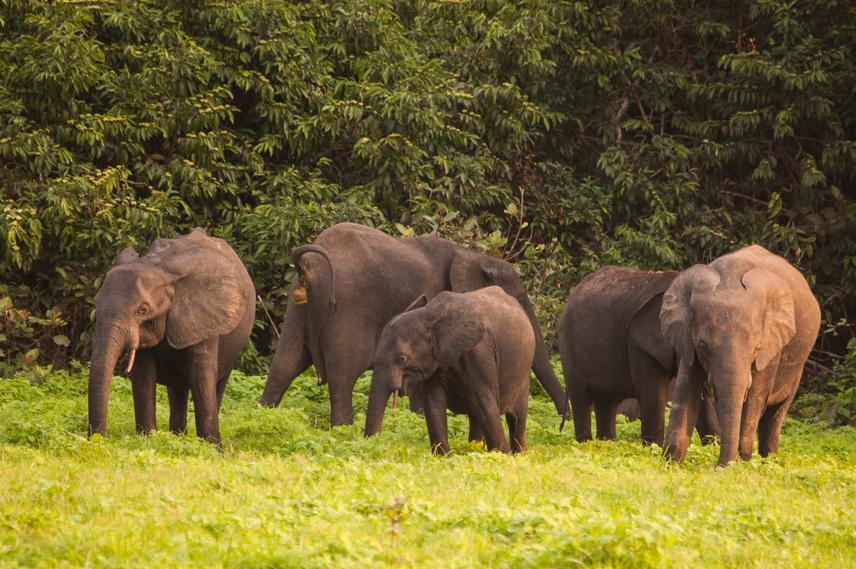Milena Beekmann
The Lac Télé Community Reserve, located in the Northern Republic of Congo, is among the most fascinating ecosystems of our planet. It is part of the largest transboundary Ramsar site in the world (shared with the Democratic Republic of Congo) and is characterised by its seasonally inundated swamp forests, grasslands and small areas of terra firme forests. Belonging to the largest tropical peatland complex, the area is thought to play a key role in the hydrological regulation of the Congo Basin. The Reserve is also known for its remarkable biodiversity, hosting a diverse ichthyofauna and herpetofauna, as well as important populations of IUCN red-listed mammal species. It is home to African forest elephants (Loxodonta cyclotis), central chimpanzees (Pan troglodytes troglodytes), and the highest density of western lowland gorillas (Gorilla gorilla gorilla) in the world. Unique in the country, the 4,600 km2 Reserve confers its ~20,000 local inhabitants’ autonomy regarding the management of natural resources.
However, the combined climate and biodiversity crises are expected to strongly impact this fragile socioecological system, putting both nature and people at risk. Despite its importance from both a biodiversity conservation and climate change perspective, the Lac Télé Community Reserve remains largely understudied, and many of those changes are taking place unnoticed. A lack of geoscientific and meteorological information currently impedes a comprehensive analysis of climate change impacts in the landscape.

African forest elephants. @ Jan Hamlet.
My project seeks to help mitigate future climatic risks in the Lac Télé Community Reserve, by providing novel data on the direct impacts of climate change on Lac Télé keystone species, and climate change indirect impacts on biodiversity, via local communities’ responses to their changing environment. I will:
1) Document local climatic changes, impacts on biophysical systems, and perceived drivers of change, through the knowledge of local communities;
2) Identify adaptive strategies and/or coping mechanisms adopted by local communities in response to climate change impacts on their livelihoods;
3) Evaluate the impacts of climate changes, human adaptive strategies and/or coping mechanisms on Lac Télé keystone species, including Loxodonta cyclotis, Gorilla gorilla gorilla, and Pan troglodytes troglodytes.
To remedy to the lack of scientific data, I am planning to utilize interdisciplinary approaches bridging the social and natural sciences. Knowledge generation will be enriched by indigenous and local communities' rich ecological knowledge to detect changes in weather patterns and climate, including biophysical systems changes, and to improve the understand of interwoven environmental changes in the Lac Télé Community Reserve.